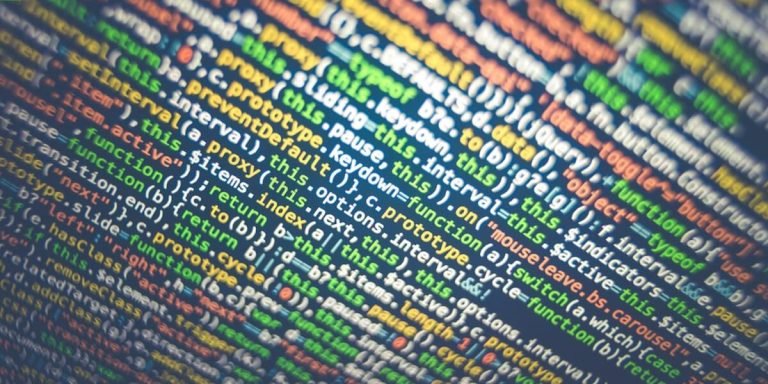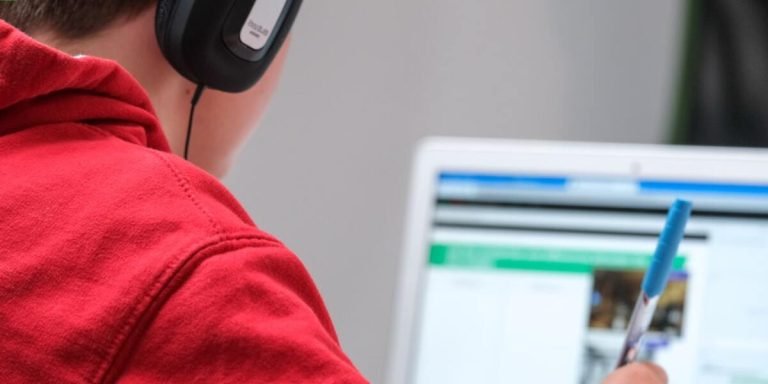What is a Smart Board in the Context of Childhood Education?
The digital world is increasingly seeping into every sphere of life, not least in the realm of education. As we ponder on “what is a smart board,” it’s prudent to acknowledge that technology integration in learning environments has become an essential part of childhood education.
A Smart board, precisely put, revolutionizes traditional teaching techniques by bringing interactivity into classrooms. It plays an instrumental role in creating engaging lessons and fostering students’ critical thinking skills – all while making learning fun. This post will explore further how this technological marvel enhances children’s educational experiences.
Did you know?
A little-known fact is that Smart Boards were first introduced in 1991 and are now used in over 175 countries worldwide, revolutionizing how children learn by encouraging interaction and collaboration.
Understanding Smart Boards in the Educational Landscape
The rapid advancements in technology have definitely not left the education sector untouched. One such innovation that is revolutionizing classrooms globally is the “Smart Board”. A smart board, as its name suggests, isn’t just a gadget but an interactive whiteboard capable of transforming how learning takes place.
Going beyond traditional teaching methods which mostly revolved around hardcopy books and chalkboards, Smart Boards allow for vibrant multimedia lessons that can engage students better than ever before. They are highly compatible with various educational software enabling educators to import images, graphs or any form of data seamlessly into their lecture slides – making complex topics more comprehensible.
Let’s also address some other perks these boards bring along! With features like handwriting recognition capabilities and multi-user functionality they encourage collaborative group projects promoting teamwork among students evenly spread throughout the classroom setting 2023’s innovative space apart.
The Evolution and Functionality of Interactive Whiteboards
Smart boards, also known as interactive whiteboards, have revolutionized the educational realm in recent years. These versatile tools bring a level of interactivity and engagement previously unheard of in traditional classroom settings.
So what is a smart board? It’s essentially an electronic whiteboard that can connect to a computer or projector. Teachers use them for presentations, demonstrating complex concepts visually with multimedia aspects like videos and graphics at their fingertips.
This significant evolution from old chalk-and-duster approach marks another milestone towards technology integration within education terrain.
How they work is equally fascinating! Smart Boards are touch-sensitive surfaces where teachers interact directly by using fingers or specially designed styluses instead of typical keyboard/mouse combination – making it intuitive tool even for youngest learners.
Another appealing aspect lies in its versatility – easily handling text documents, drawing applications, web browsers and more– all displayed on this large easy-to-see screen significantly boosting student participation levels!
Students actively participate during lessons leading to better understanding & retention rates.
Through adaptive software/hardware enhancements such as speech recognition systems or wireless switches; kids with disabilities aren’t left behind anymore but rather become active contributors too!
Comparing Traditional Teaching Methods with Smart Board Integration
In the rapidly evolving education landscape, one emerging technology that’s stirring interest is Smart Boards. For those who are new to this term – “what is a Smart board”? Simply put, it’s an interactive whiteboard used as a visual aid in classrooms.
Let’s compare traditional teaching methods with smart board integration to gain perspective on its impact and effectiveness.
Firstly, traditional teaching typically involve chalkboards or dry erase boards where teachers write information for students to copy into their notebooks. This method greatly relies on auditory learning techniques tickled by oral instruction and writing practice on paper.
Secondly while physical storage books or other analog materials were crucial go-tos before advent digital tech making notes remembering important points was often hard at times challenging comers’ attention spans especially younger pupils makes more accessible engaging providing useful elements such animated graphics videos make concepts clearer appealing real-time quizzes games which can test knowledge increase engagement retention rates.
Enhancing Classroom Engagement through Smart Board Technology
Smart Board technology marks a revolutionary turn in the sphere of childhood education, addressing the age-old question – “What is a smart board?”. As an interactive whiteboard developed by SMART Technologies, these boards have become integral tools to deepen student engagement and simplify complex subjects. With multifaceted features like touch recognition, video presentation capabilities and collaborative workspaces for students, Smart Boards have transformed traditional chalk-talk teaching methodology into something much more dynamic.
In this digital era where children are often better versed with tech-gadgets than adults, integrating technology in education becomes not only essential but also inevitable. A remarkable example being the shift from textbook-based learning to e-learning modules that facilitate intuitive understanding tailored according to individual capacities. The utilization of Smart Boards supports this transition effectively as they break down information barriers and enable multi-sensory interaction between learners and educators.
Smart boards infuse every academic domain with hands-on learning experiences. They allow students to solve mathematical problems or explore English literature classics in vibrant ways. When integrated effectively into classrooms, smart boards become ideal interactive platforms designed for real-time communication. They foster immediate feedback mechanisms, ensuring students consistently participate during lectures or lessons. Smart boards mark a significant shift from traditional teaching practices that often led to student disengagement due to one-way knowledge transmission.
Interactive Learning: Maximizing Student Participation with Smart Boards
Understanding the basics of what a smart board is, can massively contribute to how we transform traditional classrooms into dynamic learning environments. A smart board is an interactive whiteboard that uses touch detection for user input in the same way as normal PC input devices such as mice or keyboards.
In 2023, more than ever before, classroom engagement has become pivotal to students’ academic success. With improvements in digital technology cascading down right onto school infrastructure and methodologies around the globe, it’s time we integrated this powerful tool into our education systems comprehensively.
The foremost benefit of using a Smart Board lies within its ability to foster interaction and collaboration among students. Traditional chalkboards are one-dimensional – there’s little room for student participation during lectures. But with Smart Boards , every presentation turns interactive instantly!
For instance: instead of merely watching their teacher explain mathematical equations on-screen; now they could solve those problems themselves directly on-board!
Furthermore, unlike conventional presentations where content disappears once erased from boards; everything written or drawn on these electronic equivalents gets stored permanently – enabling endless opportunities for revision sessions later-on without fearing loss data over time.
Assessing the Impact of Visual Aids on Retention Rates in Digital Classrooms
Understanding the concept of smart boards is undeniably valuable in modern education. For those still wondering “what is a smart board?”, it’s an interactive whiteboard that enhances classroom engagement, transforming traditional lessons into dynamic learning experiences. It delivers multimedia content and can even help special-need students reach their potential.
Smart boards are potent visual aids capable of improving retention rates among students in digital classrooms by stimulating multiple senses simultaneously – sight and touch primarily, which boosts interactivity to foster deeper understanding.
Studies have consistently shown that information presented graphically gets retained more effectively than plain text data. This aspect manifests itself powerfully with the use of smart boards for teaching complicated subjects like mathematics or science where diagrams, flowcharts or 3D images enhance comprehension multifold over conventional teaching methods on paper/whiteboards.
The incorporation of real-life visuals such as videos into lectures also enables teachers to augment theoretical concepts with practical instances using these highly convenient technological tools. The dynamism offered by fluid animations makes complex theories accessible even at lower grade levels enhancing cognitive growth at early stages significantly boosting academic performance later on.
Furthering this impact seen from increasing usage year-over-year since 2021 according to EdTech reports due now its common presence across numerous institutions worldwide including preschools!
Implementing Smart Boards for Effective Curriculum Delivery
Implementing smart boards in classrooms has revolutionized the way education is delivered, making it more interactive and engaging for students. As we stride into 2023, embracing technology integration in education remains a key strategy to enhance learning experiences. Remember the days of chalkboards?
They seem too archaic compared to today’s advanced teaching aids.
A Smart Board, simply put, is an interactive whiteboard that uses touch detection for user input – such as scrolling, right mouse-clicks or keyboard entry – all this without requiring any physical device other than your finger or stylus! By integrating with digital media forms like images and videos alongside internet browsing capabilities make these vibrant tools conducive to effective curriculum delivery.
Transitioning from traditional teaching methods can certainly present challenges. However, once successfully incorporated into daily lessons plans, Smart Boards are exemplary at boosting pupil participation levels due their dynamic nature. The ability of educators now extends beyond merely imparting information; they inspire creativity through visual storytelling techniques using these cutting-edge resources.
Strategic Planning for Tech Integration: Setting Up a Smart Board-Enabled Classroom
In the realm of elementary education, technology integration has become a critical pillar in effective curriculum delivery. One such advancement that’s garnered significant attention is the smart board.
So what is a smart board? A Smart Board, simply put, is an interactive whiteboard with touch sensitivity similar to tablets and smartphones we use daily. This tool effectively merges traditional blackboards’ benefits with modern technology enhancing interaction between students and teachers tremendously.
Strategic planning is essential when you set up your classroom for tech integration, especially when introducing a transformative system like the smart-board. Follow these steps:
1. **Understand Your Requirements:** Before investing in any new piece of technology it’s imperative to diagnose its need based on specific lesson requirements and teaching methods employed by tutors.
2. **Intensive Training**: The success of implementing any technological equipment lies within thorough understanding & comfortable usage patterns amongst educators themselves before instructing their students about it.
3. **Pilot Testing**: Prioritize conducting pilot classes before incorporating them into mainstream lessons; this helps fine-tune potential issues ensuring smooth functioning down-the-line.
4.When implemented correctly, integrating advanced tools like smart boards can lead to greater student engagement and improved educational outcomes due to its ability to make abstract difficult concepts more understandable via vivid graphical representations coupled with auditory explanations catering multiple learning styles simultaneously.
Training Educators: Best Practices for Utilizing Smart Boards in Lesson Plans
Taking the first step in technology integration, many educational institutions are exploring “what is a smart board” and how it can improve their curriculum delivery. When used effectively, Smart Boards can transform traditional classrooms into dynamic learning environments. Here’s how educators can be trained to utilize these interactive tools optimally.
Educators must understand that a Smart Board is an advanced version of the standard whiteboard. With computer software at its core, this digital tool allows users to write on them with a stylus or finger instead of markers or chalks.
Start by offering teachers hands-on training workshops where they learn not just what a smart board is but also about its key functions and features. This would involve understanding how to open applications using touch gestures, creating virtual flipcharts for brainstorming sessions,and utilizing embedded resources such as multimedia materials for lesson enhancement.
Conclusion
In the fascinating terrain of childhood education, questions like “what is a smart board” are becoming increasingly relevant. As technology continues to evolve, so too should our approach in embracing these advances and understanding their potential for enhancing learning experiences.
So go ahead – dive deeper into your voyage of discovery on integrating tech into teaching by exploring more articles right here. You’ll uncover a trove of resources designed not just to answer queries but also empower parents and educators alike with knowledge that benefits the future generation’s progress. Shape tomorrow’s leaders today!







